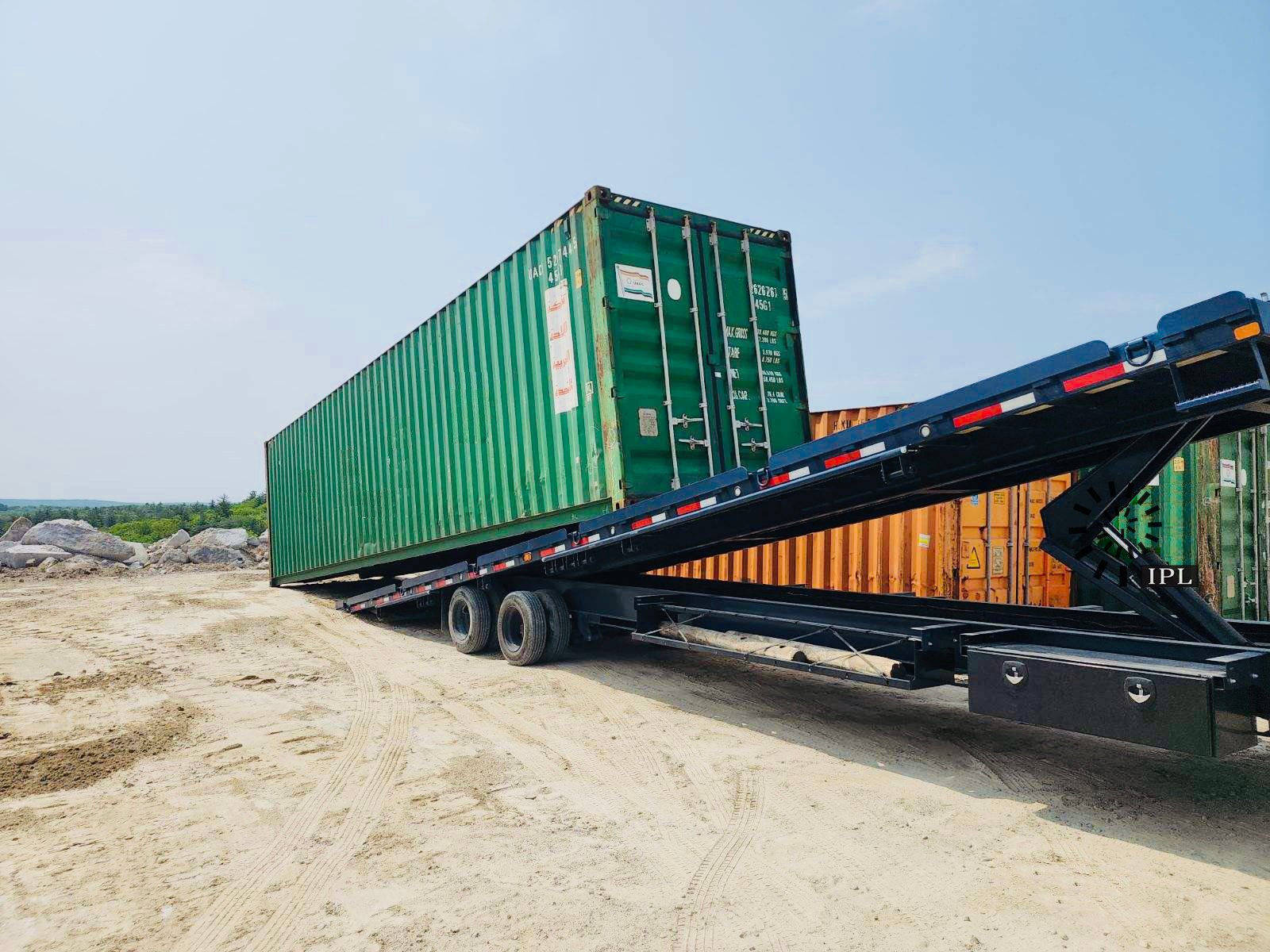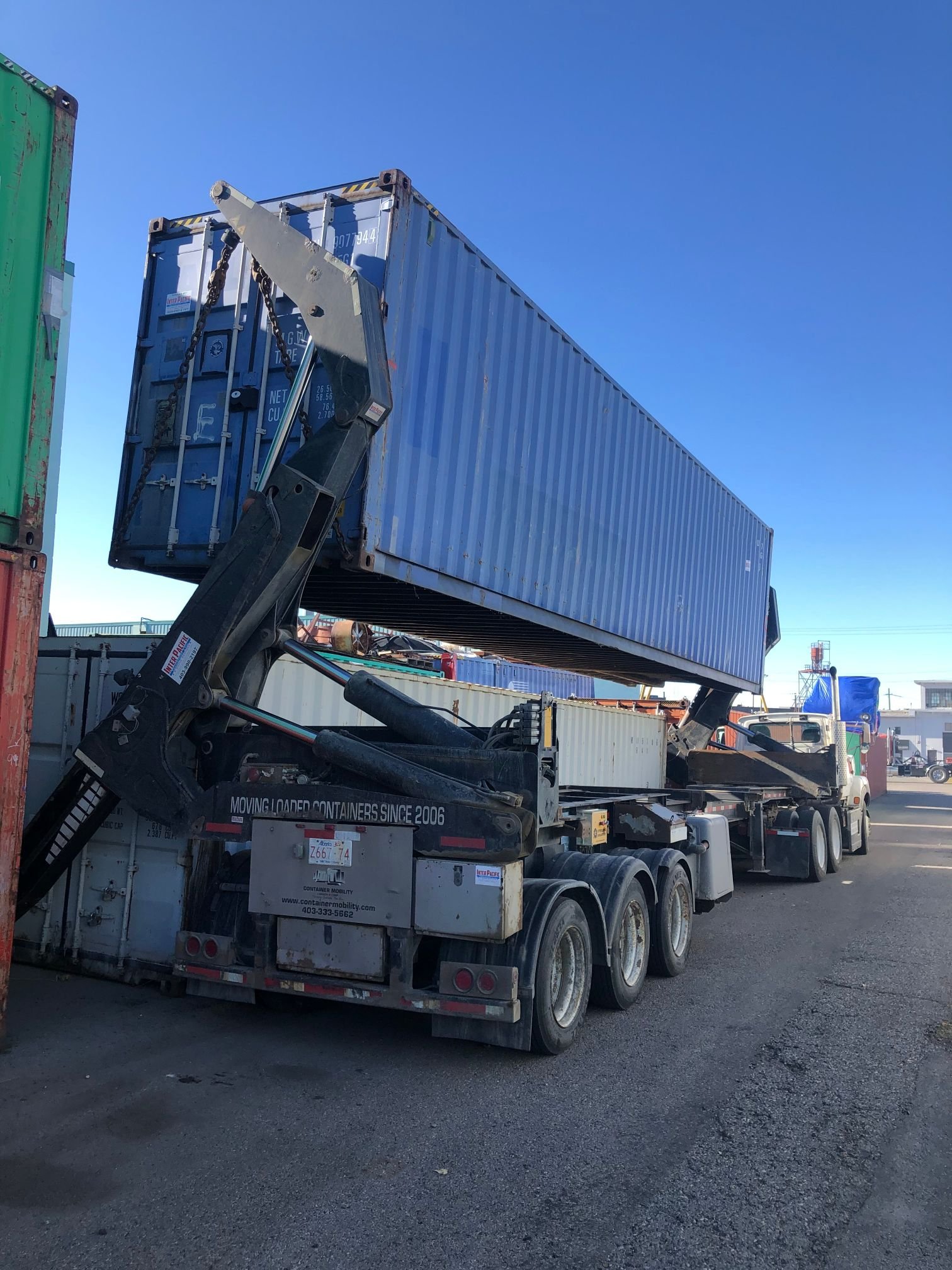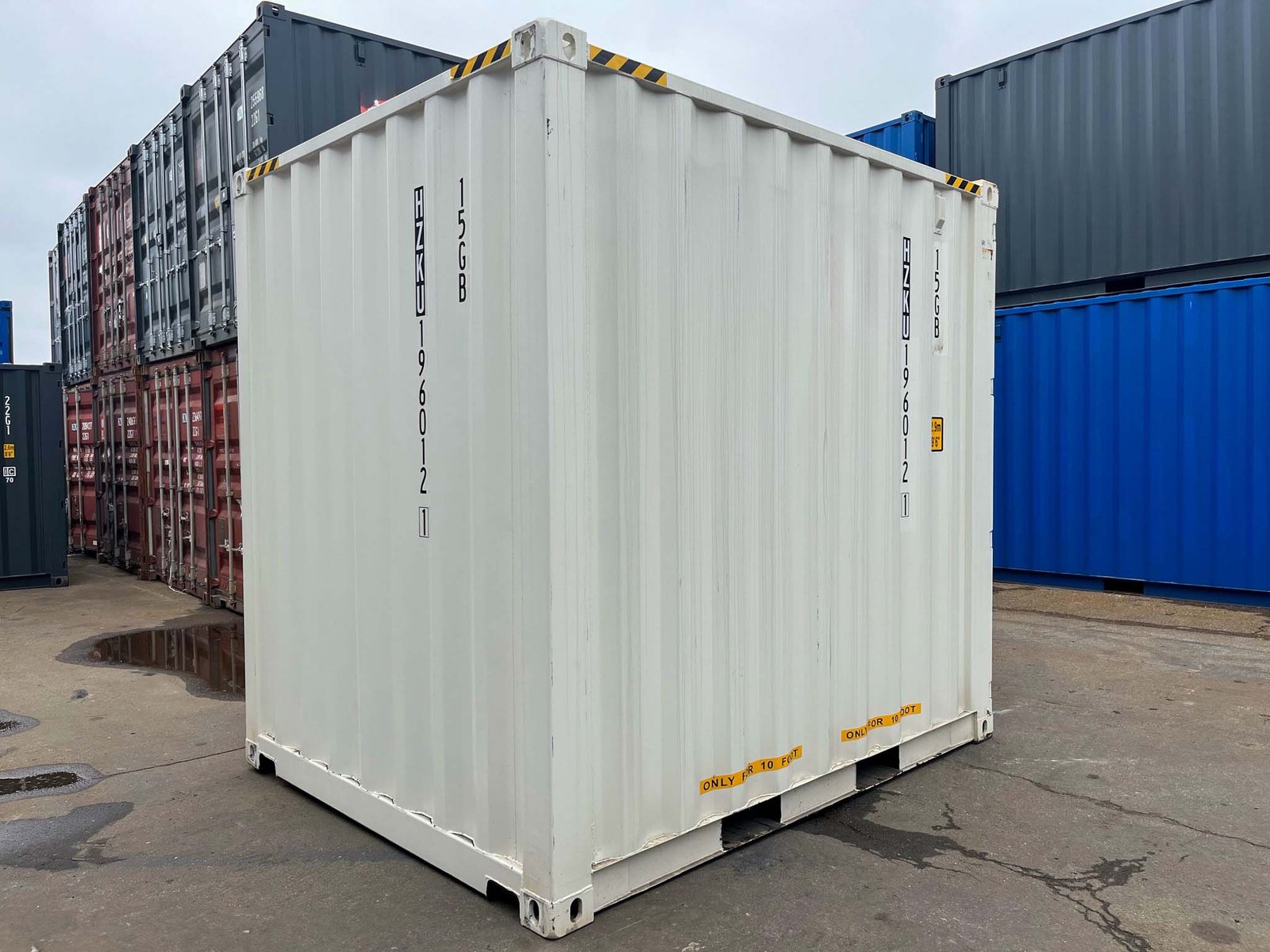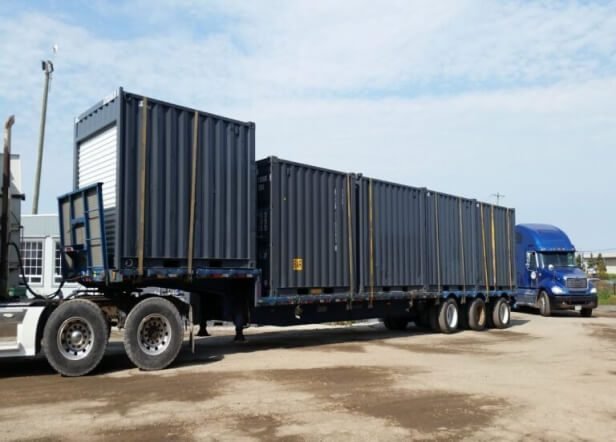Lieferung von Schiffscontainern
Versandcontainer werden per Lkw angeliefert. Die Größe des Containers und der Anlieferungsort bestimmen, welche Art von Lkw verwendet wird. Die meisten Versandcontainer werden auf Kippanhängern angeliefert. Diese Anhänger fahren zurück und kippen den Container ohne Hilfe in die gewünschte Position.
Der Anlieferungsvorgang sollte 15-20 Minuten dauern.

Lieferung auf Bodenhöhe
Kipppritschenanhänger sind die am häufigsten verwendete Methode für die Lieferung von Versandcontainern. Die Ladefläche des Anhängers wird nach oben gekippt, damit der Container heruntergleiten und in die gewünschte Position gebracht werden kann. Das bedeutet, dass der Fahrer vor Ort ankommt und keine zusätzliche Ausrüstung benötigt, um den Container auf den Boden zu stellen, sofern alle folgenden Kriterien erfüllt sind:

Containerlieferung über große Entfernungen
Bei der Lieferung von Containern über große Entfernungen oder an abgelegene Orte wird ein Flachbett- oder Stufenbettanhänger verwendet. Die Art des Containers bestimmt, welcher Anhänger für die Lieferung benötigt wird. Für einen Container mit Standardhöhe wird ein Tieflader benötigt, für einen High-Cube-Container ein Tieflader.

Lieferung von High Cube Containern im Fernverkehr
High-Cube-Container erfordern einen Stufenbett-Anhänger. Er ähnelt der Pritsche, ist jedoch niedriger und hat ein festes Deck. Zum Entladen des Containers sind ebenfalls Maschinen wie ein Kran, ein Auslegerfahrzeug oder ein Gabelstapler erforderlich.
Containerlieferung mit einem
Flachbetrailer
Wenn Ihre Containerlieferung außerhalb einer Großstadt oder an einem abgelegenen Ort stattfindet, ist es in der Regel kostengünstiger, einen Container mit einem Tieflader zu liefern. Tieflader sind die bevorzugte Methode für Langstreckentransporte und kostengünstiger pro km.


Containerlieferung mit einem
Stufenauflieger
Für den Transport von High-Cube-Containern ist ein unteres Deck, ein so genanntes Step Deck oder Drop Deck, erforderlich, damit die gesetzlichen Höhenbeschränkungen im Straßenverkehr eingehalten werden können.
Kontaktinformationen
Adresse:
Telefon Nummer:
E-Mail Adresse: info@sblcontainer.com
Useful Links
FAQ
Conditions of Use
Conditions for containers
